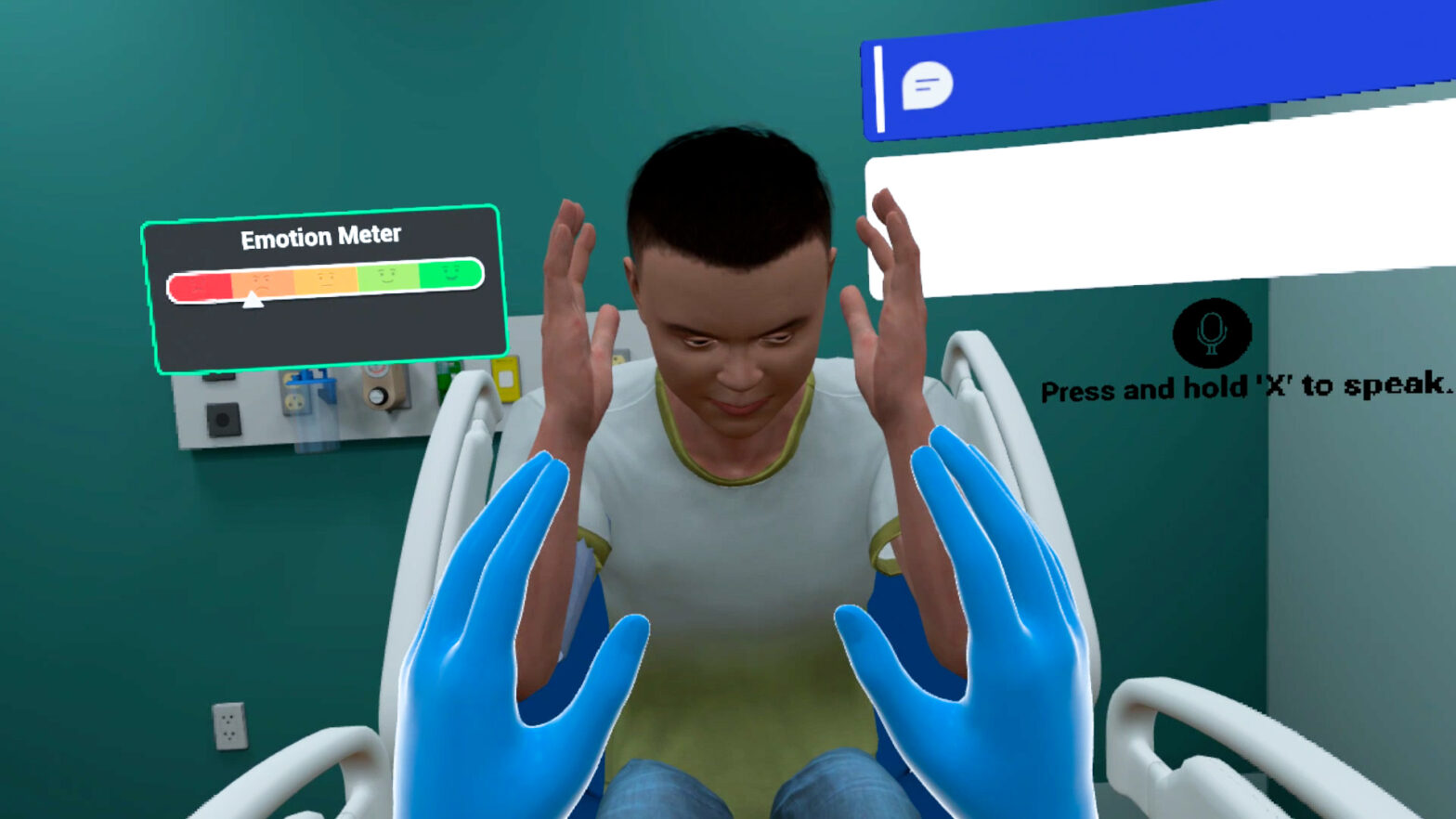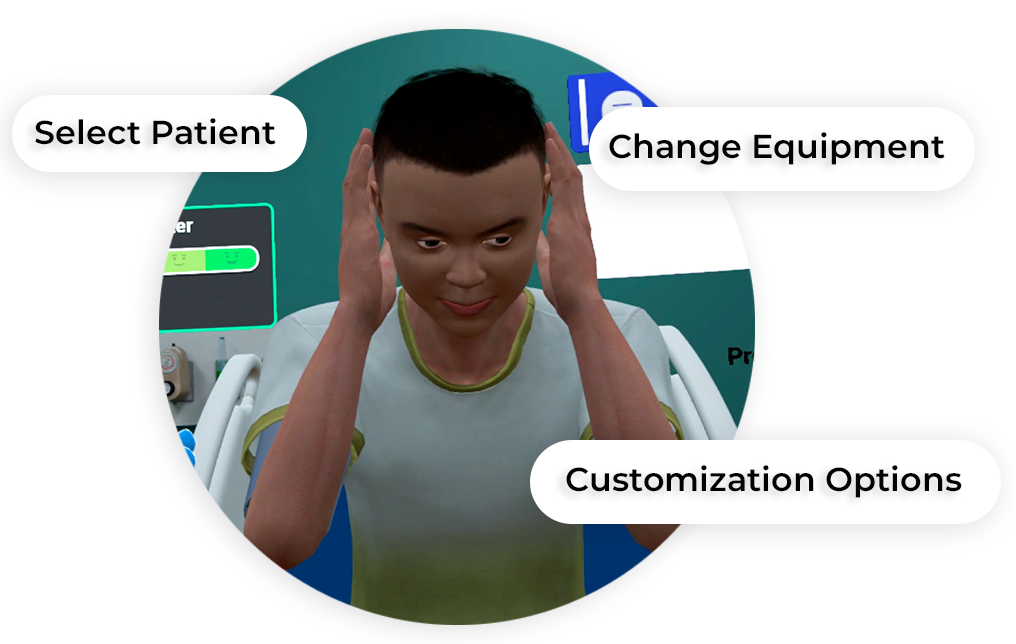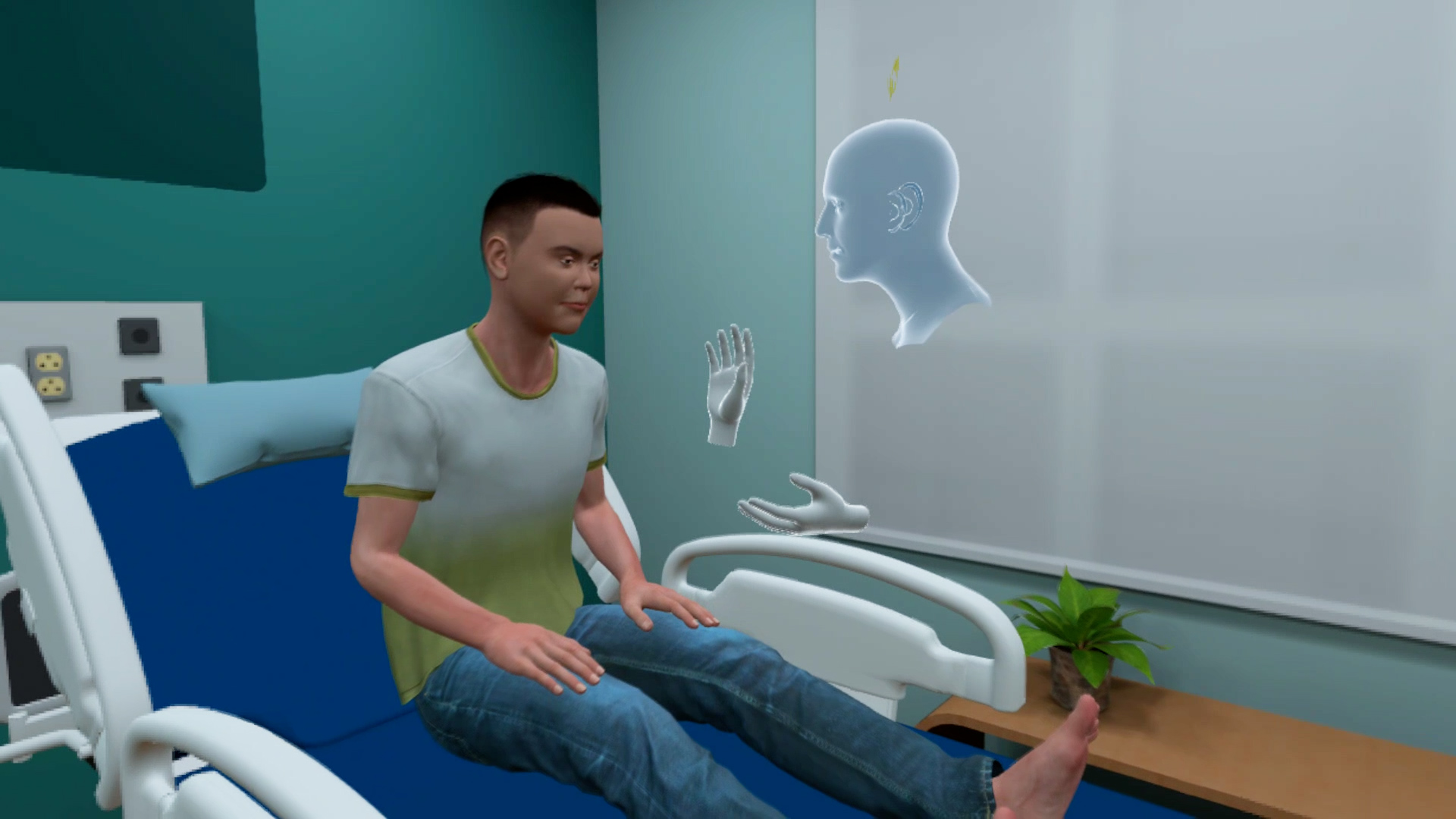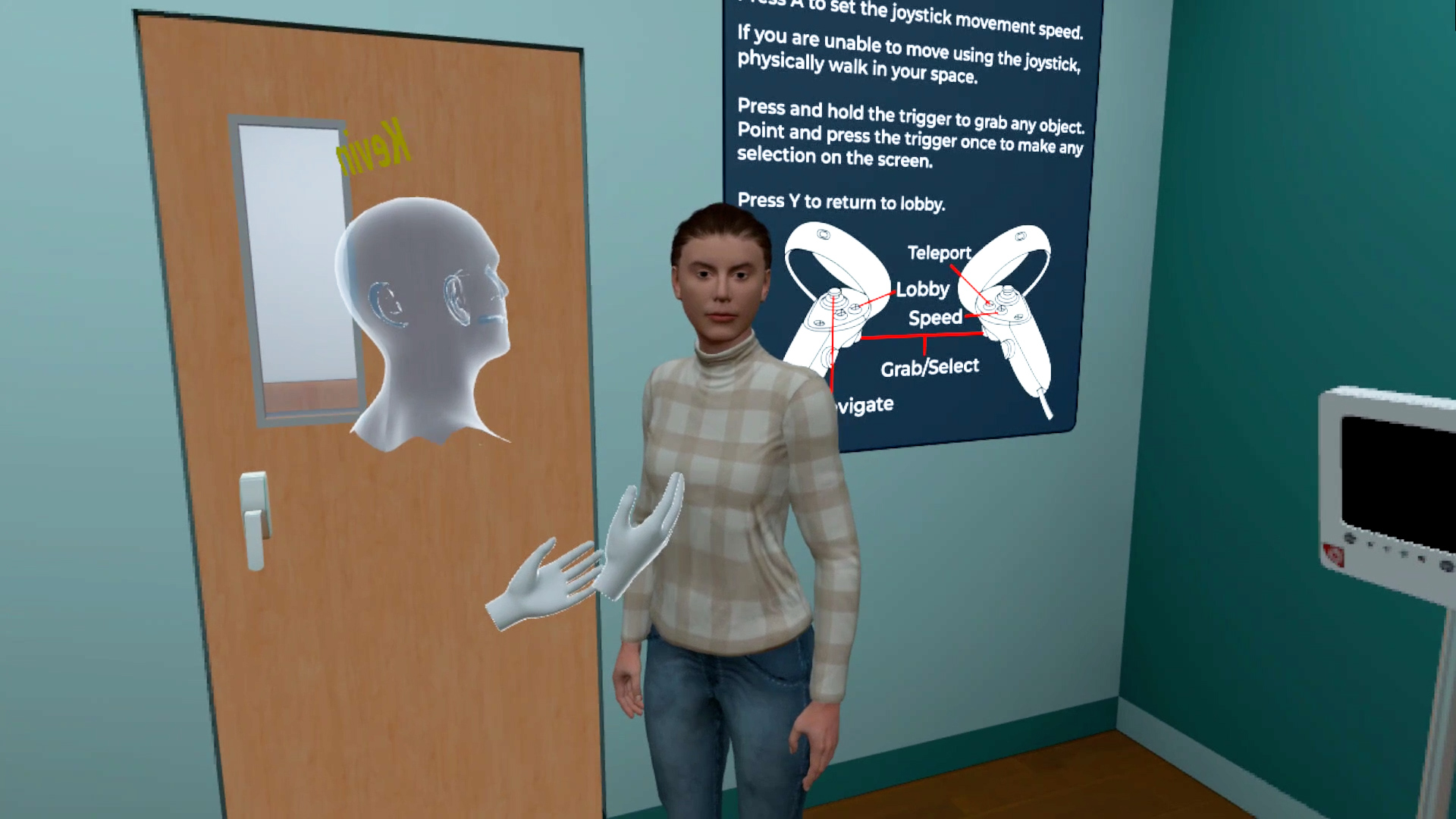ASD Patient – Conflict Management
Sam Turner is a 16-year-old with autism spectrum disorder (ASD). He was admitted three days prior for acute appendicitis. He has undergone an uncomplicated appendectomy and is now recovering. Unfamiliar surroundings and disruption in routine cause him anxiety. Sam is accompanied by his mother.
This VR simulation for De-escalation is designed to provide practitioners practice in managing and de-escalating tense situations like that of an anxious and overwhelmed autistic patient. It helps test learners on their patient management and critical thinking skills.
- Modeling the use of respectful language and maintaining a composed tone during interactions with agitated patients or family members
- Demonstrating how to effectively communicate with a verbally communicative adolescent with autism in a hospital setting
- Recognizing and responding to signs of anxiety in a patient with ASD and modifying care approaches accordingly
- Implementing de-escalation techniques and calming strategies in response to sensory sensitivities and anxiety

- Crisis Prevention Institute. (2023). De-escalation tips and techniques for verbal intervention.
- American Psychological Association. (2020). Strategies for verbal de-escalation.
Customize Your Program
Get rid of the editor. Adopt in-VR customization.
MedVR Education is bringing to you in-VR customization that will enable you to customize your procedural simulations by making selections from a range of feature choices.
- Select patient from a diverse background
- Choose preferred virtual environment
- Configure patient vitals
- Define simulation duration
- Create patient history and train with AI-Humans
- Customize session-end debriefing
- …..many more to come

 Multi-playerSessions
Multi-playerSessions Physics-based Interactions
Physics-based Interactions
Core Skills Training

ASD Patient - Conflict Management
As a part of this De-escalation scenario, the learner will begin by approaching the patient and calmy introducing themselves to the patient and his mother. The patient is recovering from a surgery and his vitals need to be checked and the learner will clearly state this requirement to the patient. As the patient tends to get anxious and overwhelmed in unfamiliar surroundings and with strangers, the learner will have to use de-escalation techniques like talking calmy, expressing empathy and explaining the procedure clearly. The simulations is set in a realistic environment to provide real-world experiences.
Debriefing
End-of-task debriefing to assess one’s performance, evaluate actions, and get the most out of the training. Examples of topics being touched upon in the debriefing include the following:
- Thorough patient assessment
- Completion of necessary steps
- Correct medication administration to patient
- Sequential completion of task
- Execution of time-sensitive tasks






